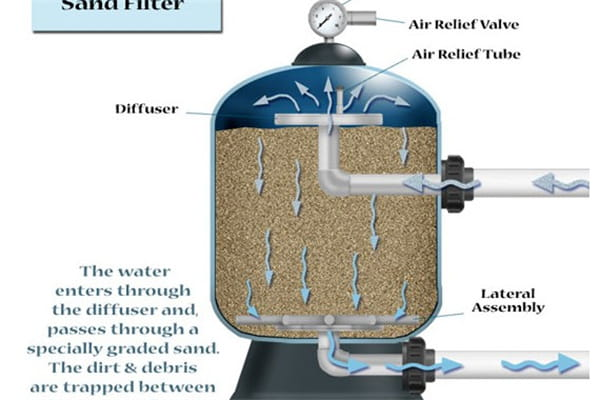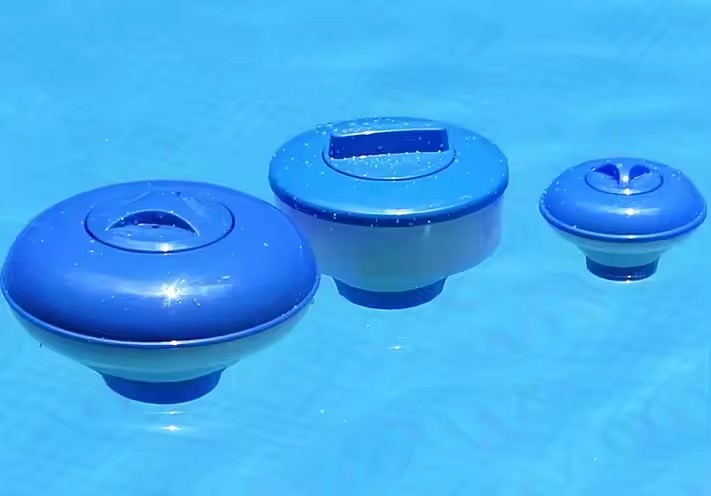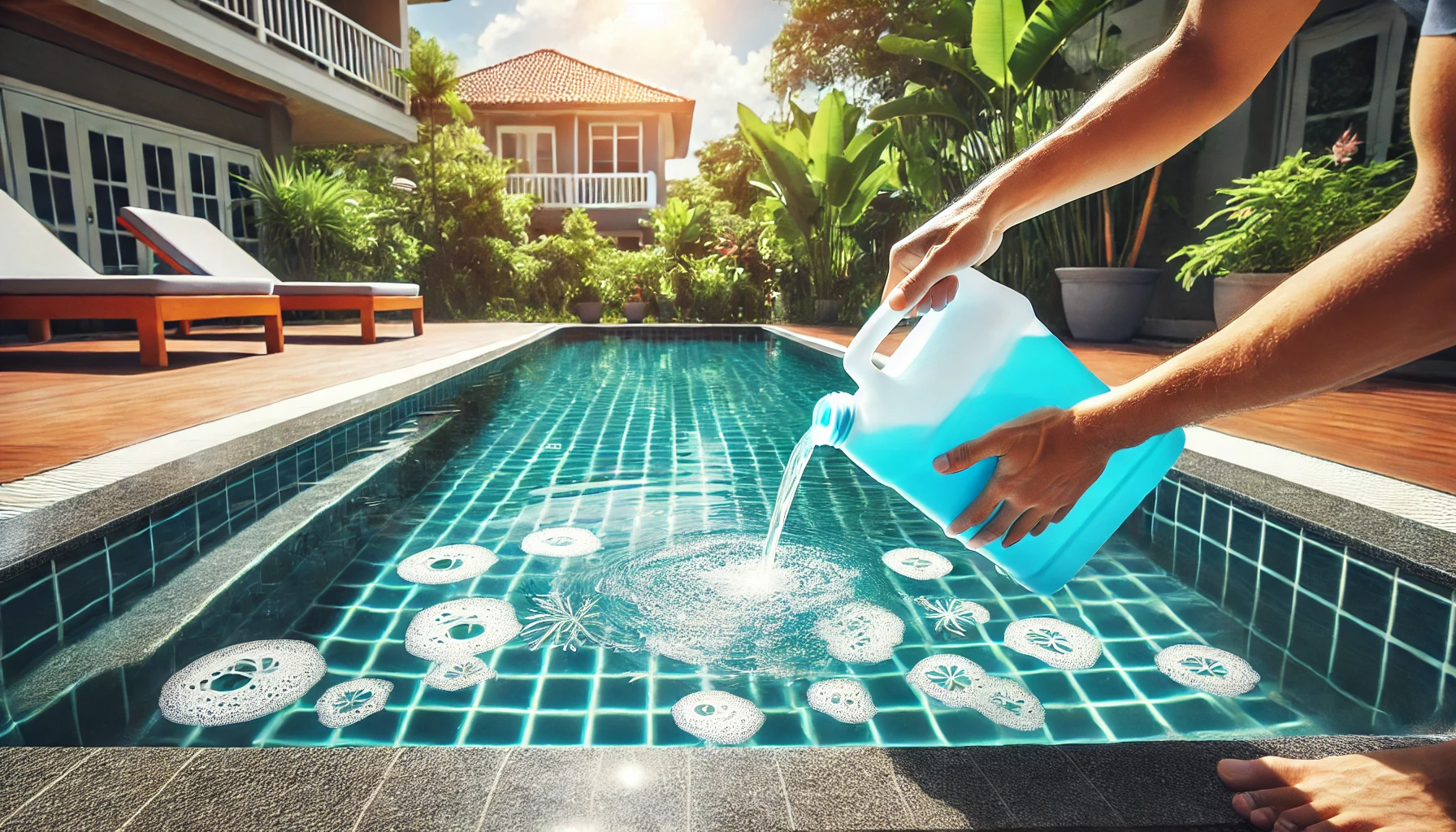Maintaining a sparkling clean swimming pool is no small feat, and one of the most critical components in achieving this is the sand filter. A sand filter plays a vital role in keeping your pool water clear and free from debris. But how often do you need to change the sand in a pool filter? This is a common question among pool owners, and in this blog, we’ll dive into the details to provide a comprehensive answer. We’ll discuss the lifespan of filter sand, the importance of regular replacement, factors that affect how often you need to change the sand, and the process of doing it yourself.

Ⅰ. Understanding the Lifespan of Filter Sand
1.Typical Lifespan:
The sand in your pool filter isn’t something you need to change frequently. Typically, the sand can last between 3 to 5 years. However, this is a general guideline, and the actual lifespan can vary depending on several factors.
2.Signs of Wear:
Over time, the sand grains in the filter become smooth and rounded, which reduces their ability to trap debris effectively. Here are some common signs that indicate it’s time to change the sand:
Cloudy Water: If your pool water remains cloudy despite regular filtration, it could be a sign that the sand is no longer effective.
Increased Backwashing: If you find yourself needing to backwash the filter more frequently than usual, it might be due to the sand losing its efficiency.
Persistent Debris: If fine debris remains in the pool even after filtration, it’s a clear sign that the sand isn’t capturing contaminants as it should.
Water Pressure Changes: Noticeable changes in water pressure through the filter can also signal that the sand needs replacing.
Ⅱ. Why Regular Sand Replacement is Important
1.Efficiency and Filtration Quality:
As the sand in your filter wears down, it loses its ability to trap dirt and debris. Smooth, worn-out sand grains are less effective at capturing particles, which means your pool water won’t be as clean or clear. Replacing the sand restores the filter’s efficiency and ensures that your pool remains inviting and hygienic.
2.Health and Safety:
A well-maintained sand filter is crucial for the health and safety of pool users. Ineffective filtration can lead to the growth of bacteria and algae, which not only make the pool water murky but can also pose health risks. Regularly replacing the sand helps to keep these contaminants at bay, ensuring a safer swimming environment.
3.Maintenance and Longevity:
Regularly changing the sand in your filter can also extend the life of the filtration system. Over time, ineffective filtration can put a strain on the pump and other components, leading to more significant (and expensive) maintenance issues. By keeping the sand fresh, you reduce wear and tear on the system, ultimately saving money in the long run.
Ⅲ. Factors Affecting Sand Replacement Frequency
1.Pool Usage:
How often you use your pool plays a significant role in determining how frequently you need to change the sand. A residential pool used occasionally will not require sand replacement as often as a commercial pool that sees heavy daily use. The more you use your pool, the more contaminants the sand needs to filter out, which can wear it down faster.
2.Environmental Factors:
The surrounding environment also affects how quickly the sand wears out. If your pool is located near trees, bushes, or in a dusty area, the filter will have to work harder to keep the water clean. Leaves, pollen, dirt, and other debris can clog the sand filter more quickly, necessitating more frequent sand changes.
3.Water Chemistry:
Maintaining proper water chemistry is crucial for the longevity of the sand in your filter. Imbalanced pH levels, high chlorine content, and other chemical factors can deteriorate the sand faster. Regularly testing and adjusting your pool water’s chemical levels can help prolong the life of the sand.
Ⅳ. How to Change the Sand in a Pool Filter
Changing the sand in your pool filter might seem like a daunting task, but with the right tools and a bit of guidance, it’s something you can do yourself. Here’s a step-by-step guide to help you through the process:
Preparation:
Before you begin, gather the necessary tools and materials:
New filter sand (make sure it’s the right type for your filter)
Shop vac or a small scoop
Screwdriver or wrench
Garden hose
Safety gear (gloves, goggles)
Step-by-Step Process:
Turn Off the Pool Pump:
Ensure the pool pump is turned off and the system is depressurized.
Drain the Filter:
Open the drain plug on the filter to remove any water inside.
Remove the Multiport Valve:
Carefully remove the multiport valve or the top dome of the filter. This will give you access to the sand inside.
Remove the Old Sand:
Use a shop vac or scoop to remove the old sand from the filter. Be cautious not to damage the laterals (the small pipes at the bottom of the filter).
Inspect the Laterals:
Check the laterals and internal components for any signs of damage. Replace any damaged parts before adding new sand.
Add New Sand:
Fill the filter with new sand, ensuring an even distribution. It’s usually helpful to add some water to the filter as you go to minimize dust and aid in settling the sand.
Reassemble the Filter:
Replace the multiport valve or dome, ensuring all seals and connections are secure.
Backwash the Filter:
Before returning to normal operation, perform a backwash to rinse the new sand and remove any dust or debris.
Resume Filtration:
Turn the pump back on and monitor the filter for any leaks or issues.
Ⅴ. Conclusion
Understanding how often to change the sand in your pool filter is crucial for maintaining clear and safe pool water. By recognizing the signs of worn-out sand, appreciating the importance of regular replacement, and considering the factors that affect sand longevity, you can keep your pool in top condition. Don’t hesitate to tackle the sand-changing process yourself – with the right preparation and steps, it’s a manageable task that can significantly enhance your pool’s health and your enjoyment. Additionally, for those looking for alternatives, considering a filter cartridge might offer different advantages depending on specific needs.


